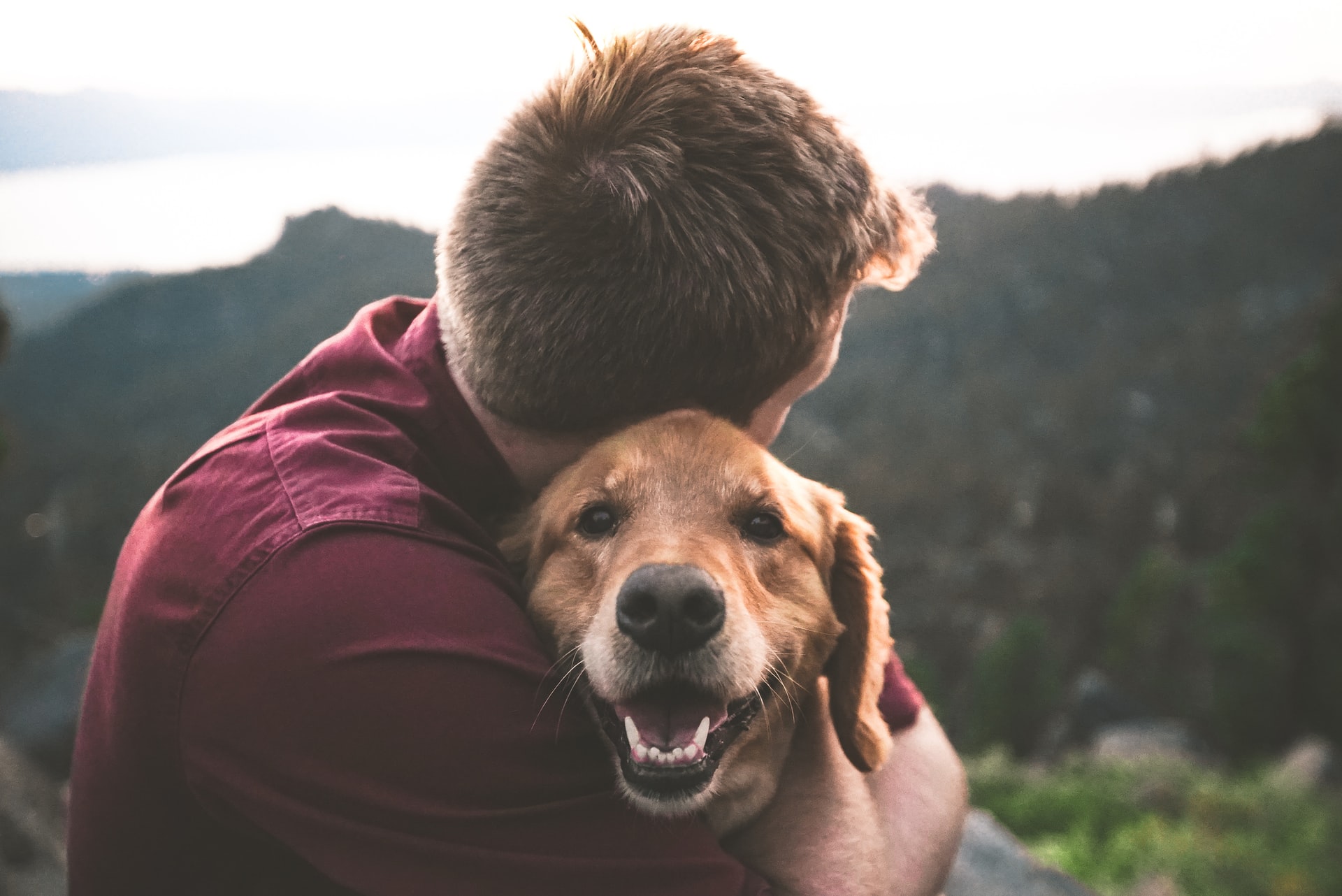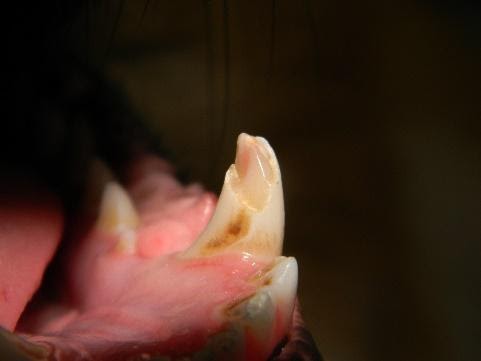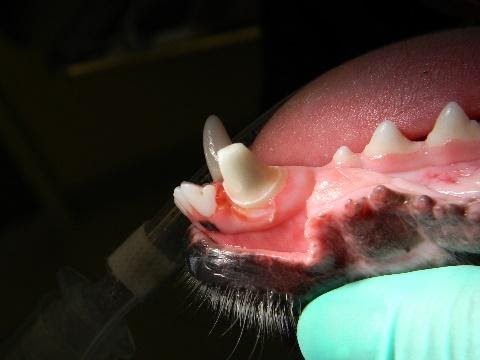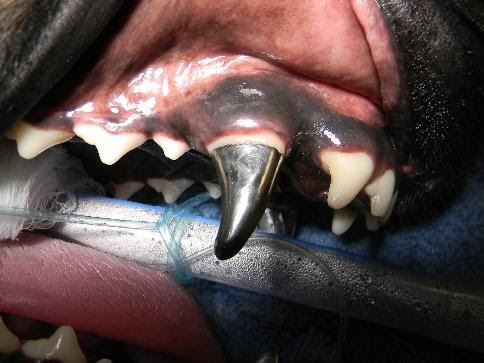
02 Sep Treating Tooth Fractures in Dogs & Cats with Root Canal Therapy
Fractured or discolored teeth are one of the most common problems diagnosed in dogs and cats when a veterinarian performs an oral exam. These injuries are almost always painful for the pet and the teeth are often accompanied by a bacterial infection.
Although teeth are as strong as bones, they are still susceptible to chipping or fracturing. Dogs frequently fracture teeth by chewing on things that are too hard for their teeth, such as marrow bones and rawhide chew toys. The most common cause for cats to fracture teeth is fighting with other animals.
The Layers of Your Pet’s Teeth
The crown, or visible portion of a tooth, has enamel on its surface with underlying dentin that surrounds the pulp. Enamel is the rock hard covering of the crown that is impermeable (nothing gets through it). Dentin makes up the bulk of the tooth. Unlike enamel, however, it is permeable to bacteria when it is exposed. Pulp is the “life-blood” of a tooth. It carries blood vessels, nerves and numerous different types of cells.
What Happens When a Tooth is Fractured?
When a tooth is fractured, and dentin is exposed, the pulp may be able to stimulate cells to seal dentin internally and the tooth can remain alive. Unfortunately, the pulp is not always able to do this fast enough, in which case bacteria and inflammation overwhelm it and the pulp dies. The only way to diagnose this problem is with a dental radiograph (x-ray) or cone beam computed tomography scan of your pet’s mouth.
Often dog and cat teeth are fractured so severely that the overlying enamel and dentin are broken away and the pulp is directly exposed. In these situations, the pulp can never seal and protect itself like dentin can. If the pet is taken to a veterinary dentist within 24-48 hours they may be able to keep the tooth alive with a pulp cap procedure that removes a portion of the exposed pulp and seals the canal with a dental composite material.
If a pulp cap procedure does not take place within 24-48 hours of fracture, the pulp will always become infected with bacteria. The resulting inflammation is painful for the pet and the pulp will die. Bacteria then have free access to the entire pulp canal and will infect the surrounding bone at the deepest part of the root, the apex. When this happens, it always leads to the formation of an abscess.
Dogs and cats feel pain associated with infection and inflammation in the same way people do; they just don’t show outward signs of pain the way we do. To show pain is to show weakness and be more susceptible as a preyed upon animal. Even though they may not have natural predators in their domestic lives, this is still very much a part of their genetic makeup. They will also keep eating through the pain of a fractured or discolored tooth. That survival instinct to keep eating is so strong they simply will not give it up.
What Does a Discolored Tooth Mean?
Discolored teeth in the absence of a fractured crown are often an indication that the pulp has died. This is usually the result of some type of blunt trauma to the tooth, for example, when a dog bites down on something that is very hard. The pulp is literally bruised, inflamed and bleeds internally in its canal. If the inflammation and bleeding do not stop, the pulp will die. While bacteria may not be involved, the tooth is still painful, and inflammation will result at the root apex.
When is a Root Canal Necessary?
Fractured or discolored teeth that have resulted in the death of the pulp should always be treated with either root canal therapy or surgical extraction. Teeth that are most important for chewing and grasping behavior, such as the canine (fang), carnassial and incisor teeth, can often be saved with root canal therapy by a board-certified veterinary dentist.
This procedure involves entering and removing the infected pulp with very specific instruments and then irrigating the canal with different types of safe disinfectants that kill any remaining bacteria. The canal is then filled and sealed with an inert (non-reactive) dental material and capped with a dental composite. This deprives bacteria and inflammation, and the pain they cause, of a place to live.
A root canal is always done under anesthesia with adjunctive pain relief and carries an excellent prognosis when performed by a veterinary dental specialist. Fractured teeth in dogs that are treated with root canal therapy are often prepared for a metal crown. The crown is fabricated by an outside laboratory and cemented in place usually 10-14 days later. The metal crown imparts added strength to the fractured tooth and carries a very good prognosis for protecting the tooth for the remainder of the dog’s life.

Figure 1. A fractured canine tooth with pulp exposure in a dog.

Figure 2. The same tooth after it has been treated with root canal therapy and prepared for a metal crown

Figure 3. A metal crown on a canine tooth of a dog four years after it was cemented in place.
When is Extraction Necessary?
If root canal therapy is not performed for a tooth with a dead pulp, the tooth should be surgically extracted. This will remove the source of pain and infection. Like most dental procedures performed on dogs, surgical extractions must always be done under anesthesia and require incisions in the gum tissue and removal of a portion of the surrounding bone. The entire tooth must be extracted, and the site closed with suture material. There is a recovery time of at least 14 days that oral play and chewing behavior must be restricted and pain relief given to the pet.
Treating Fractured Teeth in Dogs & Cats
How can a pet owner decide between root canal therapy or surgical extractions for their pet? Your regular veterinarian or board-certified veterinary dentist will help advise you with this decision.
I stress to my clients that infected and dead teeth need to be dealt with one way or another. Ultimately, my goal is to get your pet to a pain-free and infection-free place. Surgical extractions will accomplish that. However, extractions are permanent. The tooth will never grow back, and the pet will permanently lose the function of the tooth.
This has a greater impact when the more important teeth are involved (canine, carnassial and incisor). There is a recovery process where the soft tissues and bone of the extraction site(s) have to heal. Also, the corresponding teeth that the tooth worked alongside with in the chewing process are now at greater risk for developing advanced periodontal disease since they have lost their partner. Still, surgical extractions are certainly far better than leaving a painful and infected tooth in place.
The beauty of a root canal procedure is that the pet gets to keep the tooth and they do not need to go through the recovery of a surgical extraction. The infection and pain are still removed and the function of the tooth preserved. When performed by a veterinary dental specialist a root canal procedure has an excellent prognosis. It will permanently remove infection and inflammation and relieve the pain they cause.
Again, the most important thing is that a tooth with a dead and infected pulp is always treated with either surgical extraction or root canal therapy. There is no “keeping an eye on it”. This will only serve to keep the pet in pain for as long as the tooth is left untreated.
Board-Certified Veterinary Dentist in Colorado Springs
If you are concerned about your dog or cats fractured or discolored teeth, feel free to call our staff at Animal Dental Care and Oral Surgery in Colorado Springs, Castle Rock or Loveland to help you decide the best treatment option. We are always here to help you provide the best oral care for your precious pet and keep them healthy and active in our beautiful state of Colorado.

